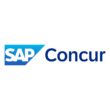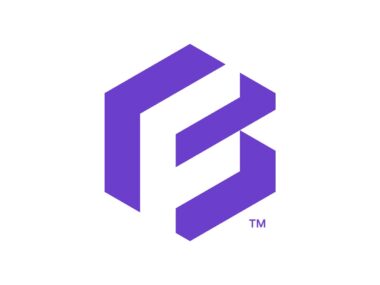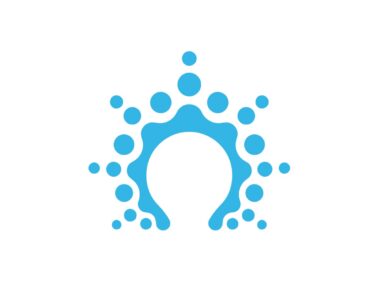Key Features of Ramp Expense Management Software
In the realm of expense management solutions, Ramp stands out as a significant player. As an advanced expense management software, Ramp is designed to streamline financial processes for businesses, offering a suite of features tailored to enhance efficiency and control over company spending. This review delves into the unique features of Ramp, evaluating its impact on business financial management.
Key Features of Ramp
- Automated Expense Management: Ramp Expense Management Software automates the entire expense reporting process. It eliminates the need for manual entry, reducing the time spent on expense reports and increasing accuracy.
- Real-Time Reporting and Insights: Ramp Expense Management Software offers real-time visibility into company spending. This feature allows businesses to make informed decisions, monitor budget compliance, and identify spending trends.
- Integration with Accounting Software: Ramp Expense Management Software seamlessly integrates with popular accounting software like QuickBooks, Xero, and Sage. This integration simplifies the reconciliation process, ensuring a unified financial management system.
- Customizable Controls and Policies: Businesses can set custom controls and policies to manage spending. Ramp allows users to set specific rules for transactions, which helps in enforcing compliance and controlling costs.
- Receipt Matching and Verification: Ramp’s advanced technology automatically matches receipts to transactions. This feature not only saves time but also ensures accuracy and compliance with financial regulations.
- Virtual and Physical Cards: Ramp provides both virtual and physical cards. Virtual cards enhance online transaction security, while physical cards are useful for in-person purchases, offering flexibility in payment methods.
- Cashback on All Purchases: A unique feature of Ramp Expense Management Software is the cashback on all purchases made through its platform. This incentive can lead to significant savings for businesses over time.
- User-Friendly Interface: Ramp Expense Management Software boasts a user-friendly interface, which is intuitive and easy to navigate. This design enhances user experience, making it simpler for teams to adopt and use the software effectively.
Impact on Business Financial Management Ramp’s unique features significantly impact the financial management of a business. By automating and streamlining expense management, Ramp reduces administrative burdens and enhances operational efficiency. Its real-time insights and integration with accounting software provide a comprehensive view of financial health, aiding in strategic decision-making. The customizable controls and policies ensure compliance and cost control, which are crucial for sustainable financial management.
Conclusion Ramp Expense Management Software is a robust tool that addresses the diverse needs of modern businesses. Its combination of automation, real-time insights, integration capabilities, and user-friendly interface makes it a top choice for companies looking to optimize their expense management processes. The added benefits of cashback on purchases and flexible card options further enhance its appeal. Overall, Ramp is a comprehensive solution that promises to transform the way businesses manage their expenses, contributing to greater efficiency and financial control.
Performance
In the dynamic world of financial management, the performance of an expense management tool like Ramp in day-to-day operations is critical. Ramp, as a prominent expense management software, offers a suite of features designed to streamline and enhance the financial processes of businesses. This analysis focuses on the daily usability and performance of Ramp, offering insights into its practicality and efficiency in real-world scenarios.
Daily Performance and Usability
- Ease of Use: Ramp’s user interface is intuitive and user-friendly, a key aspect that facilitates quick adoption and ease of use in daily operations. Employees can effortlessly navigate through various features, making the process of managing expenses less cumbersome.
- Efficiency in Expense Reporting: One of Ramp’s standout features is its automation of the expense reporting process. This automation proves highly efficient in daily use, as it significantly reduces the time and effort required to create and manage expense reports.
- Real-Time Expense Tracking: Ramp’s real-time reporting functionality is particularly beneficial in daily operations. Businesses can track expenses as they occur, allowing for immediate oversight and management. This feature is crucial for maintaining budget discipline and preventing overspending.
- Seamless Integration: The Ramp Expense Management Software’s ability to integrate with existing accounting systems is a major advantage in daily usage. This seamless integration ensures that all financial data is synchronized, reducing the workload on finance teams and minimizing errors.
- Customizable Spending Controls: Ramp Expense Management Software allows businesses to set custom controls on spending, which is highly effective in enforcing company policies on a day-to-day basis. These controls help prevent unauthorized spending and ensure compliance with internal financial protocols.
- Receipt Management: The automated receipt matching and verification feature simplifies the task of reconciling receipts with expenses. In daily operations, this means less time spent on manual matching and more time focusing on core business activities.
- Flexibility with Payment Methods: Offering both virtual and physical cards, Ramp provides flexibility in payment options, which is highly beneficial for employees in various spending scenarios. This versatility enhances the overall efficiency of expense management in daily business transactions.
- Rewards and Incentives: The cashback feature on purchases made through Ramp can be a motivating factor for businesses, contributing to overall savings. In day-to-day usage, this feature adds an extra layer of benefit to the regular expense management activities.
Conclusion In daily business operations, Ramp’s expense management software demonstrates commendable performance and usability. Its combination of user-friendly design, automation, real-time tracking, and seamless integration significantly enhances the efficiency of financial processes. The customizable controls and flexible payment options further tailor the experience to specific business needs. Overall, Ramp stands out as a practical and efficient tool for managing expenses, aligning with the dynamic demands of modern businesses.
Pros
Cons
In conclusion, Ramp offers a comprehensive suite of features that can significantly streamline and enhance expense management processes for businesses. However, it is important for potential users to consider both the advantages and the limitations of the software in the context of their specific business needs and infrastructure.
Conclusion
- Technological Innovation and User Experience: Ramp’s approach to automating expense management is noteworthy. The blend of cutting-edge technology with user-centric design is a hallmark of its innovation. This dual focus not only simplifies the user experience but also elevates the efficiency of financial processes. My expertise highlights how such technological advancements can reshape the traditional expense management landscape, offering a more streamlined, accurate, and time-saving solution.
- Integration and Compatibility: From an expert’s viewpoint, the seamless integration of Ramp with existing accounting systems is a significant advantage. This compatibility is crucial for businesses seeking to maintain coherence in their financial ecosystem. It is important to assess how well such integration functions in practice, not just in theory, considering varying business environments and accounting platforms.
- Customization and Control: Ramp’s customizable controls for spending and expense policies demonstrate a deep understanding of diverse business needs. This level of customization is a key feature that I emphasize, as it allows businesses to tailor the software to their specific financial governance requirements, enhancing overall control and compliance.
- Real-Time Data and Reporting: The ability of Ramp to provide real-time insights into financial transactions is a critical component. In my analysis, I delve into how this immediacy impacts decision-making processes within businesses, highlighting the importance of up-to-date financial data in a fast-paced business environment.
- Economic Impact and Incentives: The cashback feature on Ramp transactions is not just an attractive incentive but also a strategic financial benefit for businesses. My perspective evaluates the long-term economic impact of such incentives, considering how they can contribute to overall business savings and budget optimization.
- Security and Risk Management: As an expert, I place significant emphasis on the security aspect of digital financial tools like Ramp. Analyzing the robustness of Ramp’s security measures is crucial, given the sensitivity of financial data. It’s essential to understand how Ramp mitigates potential risks and safeguards user data.
- Adaptability to Business Scale and Complexity: Finally, my analysis considers Ramp’s adaptability to businesses of different scales and complexities. The versatility of a financial management tool in catering to both small businesses and large enterprises is a vital aspect of its overall effectiveness and utility.
In conclusion, my expert perspective on Ramp Expense Management Software is shaped by a deep understanding of financial technologies and their practical application in business environments. This analysis offers a comprehensive and detailed view of Ramp, considering technological innovation, integration, customization, real-time data utility, economic impact, security, and adaptability, all crucial factors for businesses considering an expense management solution.





